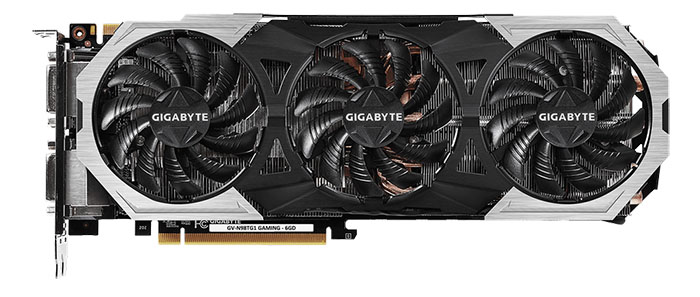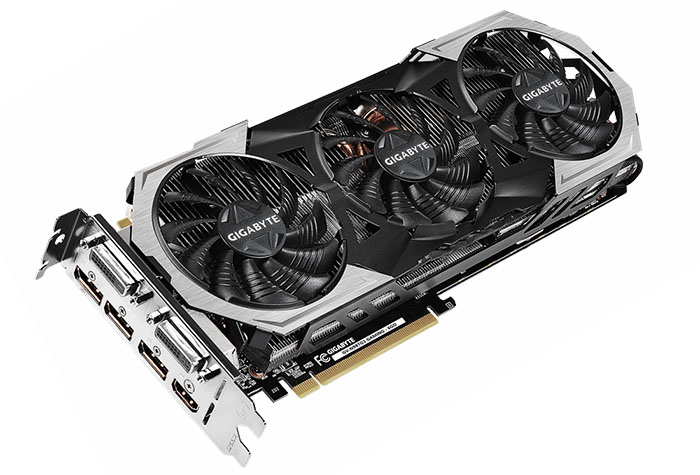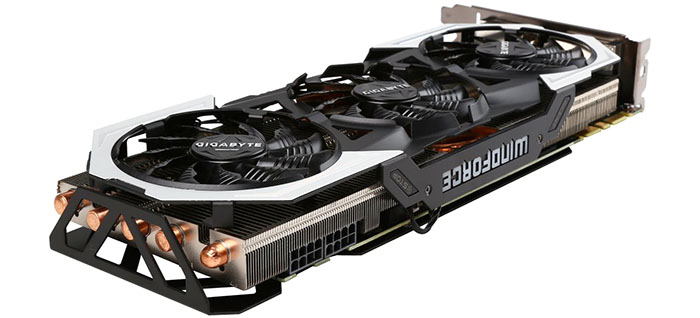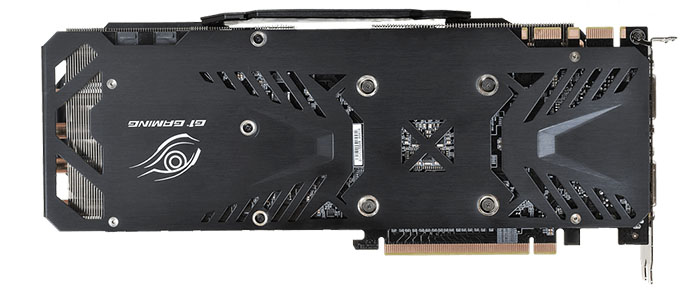Introduction
The battle for the high-end graphics-card market has hotted up just recently. First came Nvidia's GeForce GTX Titan X followed by GTX 980 Ti earlier this month. The reason for the GTX 980 Ti's arrival was simple: to pre-empt the AMD Fury X card from stealing the limelight. Said Fury X has now been through the benchmark wringer and has performed at a level just below the standard GTX 980 Ti, according to our extensive results.
Nvidia knows that AMD's partners are not allowed to design their own Fury X boards, thus limiting overclocking potential, which is reasonably mediocre on review card, so it wants its own cohort of partners to push their super-clocked GTX 980 Ti versions all the more. We've already seen EVGA and Zotac is action, with both cards performing suitably speedily in the high-resolution benchmarks, but it's now the turn of Gigabyte and its G1 Gaming card sporting a revised livery.
Gigabyte's G1 Gaming doesn't do things by halves in the high-end space. The formula tends to be one of mounting the biggest, most effective cooler it can find and then propelling the base GPU by as much as it dare.
The GTX 980 Ti variant cuts an attractive figure with the two-tone finish. Though appearing new on first glance, the cooler is actually very similar to the all-black model found on, say, the GTX 980 model - both offer the potential to wick away up to 600W of heat (really, Gigabyte?) and measure a full 12 inches wide. Gigabyte's keen to point out that such cooling is compacted into a regular dual-slot form factor.
Build quality is very good as the cooler is manufactured from decent brushed metal that has very little flex. A trio of fans sit on top of a robust cooling solution that employs five 8mm heatpipes in addition to a single 6mm, and the design has worked well for the company in the past. As expected, this is one serious bit of kit that weighs comfortably north of 1kg.
A massive copper block, in contact with the core, attaches to the heatpipes and card-wide aluminium fins. Such an expanse of metal means the fans are unusually thin in profile, as is common on recent high-end Gigabyte cards, but the company has no plans to shelve the current WindForce 3X cooler in favour of the two-fan designs used by much of the competition. The metal shroud is perforated at many points, more for style than substance, but this does mean that most of the hot air is recirculated into the chassis, so ensure you have good front-to-back cooling in your case.
Those massive heatpipes jut out of the front and lend an air of menace to the card. Though the heatsink is almost identical to its predecessors found on other G1 Gaming cards, there are subtle differences other than the obvious colour accents on the top. Gigabyte now fills in the spaces around the WindForce logo with white LED-backed 'Stop' and 'Silent' markings. The card's three fans switch off completely under low load, which is always good to see, and these two markings light up when the card is in a zero-fan-mode state.
And the WindForce logo itself has had a makeover. Shipping with the usual Gigabyte white lighting by default, users can toggle the logo to one of six other colours by installing the company's OC Guru II software. The chosen setting is persistent, meaning it remains that chosen colour irrespective of whether the software is running or not. The colours are deep and rich and are a nice addition if you have a case with a large side window.
As you would expect, power is sourced from two 8-pin power connectors capable of delivering a total 375W to the card once the PCIe slot is factored in. The GTX 980 Ti ships with a default 250W so there's plenty of electrical headroom. Beefing up the power-delivery side of matters, the card uses a 8-phase design, up from the 6 phases on the reference card. Of course, higher numbers usually read better, but be wary of falling into the 'phase trap.'
Underneath, the memory and hotter-running VRMs are covered by specific heatsinks that are indirectly cooled by the downward-firing air produced by the fans. Gigabyte has a host of information on its site that shows how the cooler beats the reference design in every way thus raising expectation of frequencies.
Helping keep this behemoth of a card rigid is a large backplate that secures firmly to the rear of the PCB. It appears to do its job well, becoming warm to the touch after extended use. We sometimes use the proverbial 'built like a tank' to express the solidity of cards; Gigabyte's G1 Gaming is certainly deserving of that mantle.
This card is interesting insofar as it has two main operating modes - gaming and OC. Out-of-the-box core frequency is an impressive 1,152MHz that rises to 1,241MHz average under regular boost conditions. This alone is enough for it to handily trounce the reference card but Gigabyte goes further and enables users to activate the OC mode via the OC Guru II software. Here, the card runs at a base/boost of 1,190/1,291MHz, respectively, offering some of the tastiest speeds around. Problem is, the OC mode disappears if the computer is rebooted - it's not persistent - and the application has to be reloaded each time.
But don't let that put you off. Our sample card, run in regular mode, pays little heed for supposed official specifications by boosting to a stable, consistent 1,367MHz across our eight games. That's heck of a speed when you consider the reference card is rated at 1,076MHz boost. Unfortunately the 6GB of GDDR5 memory toes the reference line by clocking in at 7,012MHz; it's a shame the G1 Gaming doesn't increase this a touch, too.
Gigabyte almost sticks to Nvidia's reference outputs. The main difference between the two is the addition of a second dual-link DVI port on the top-left section. Of course, this scuppers the possibility of exhausting any meaningful airflow from the back, but with an open-air design, that's not a huge concern. Four of the six outputs can be used concurrently, through the company's Flex Display outputs. Gigabyte claims this technology to be unique, yet it appears no different from the reference setup at first glance.
Costing £600, shipping with Batman: Arkham Knight (which is delayed for now), backed by a three-year warranty and running like the clappers on the core, want to know just how fast it is? Read on to find out.















